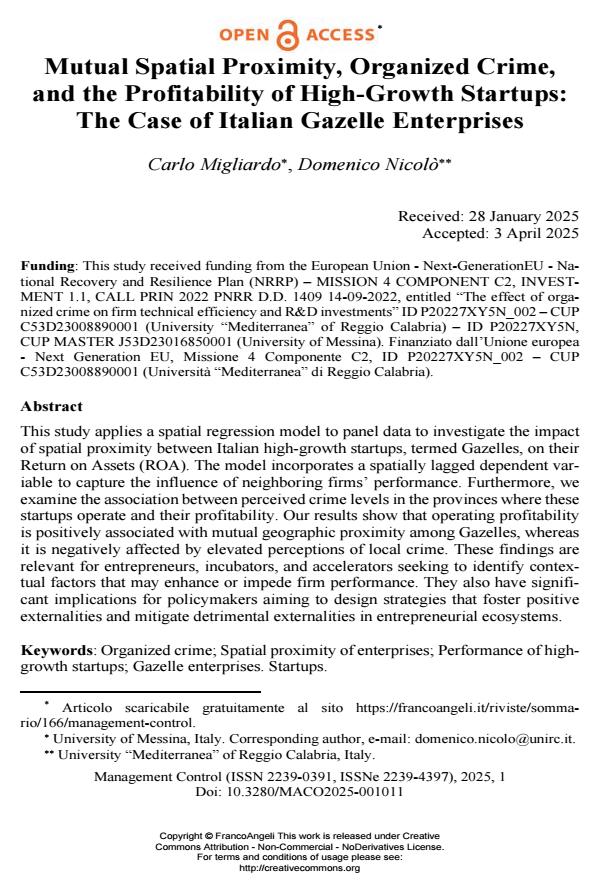Mutual Spatial Proximity, Organized Crime, and the Profitability of High-Growth Startups: The Case of Italian Gazelle Enterprises
Titolo Rivista MANAGEMENT CONTROL
Autori/Curatori Carlo Migliardo, Domenico Nicolò
Anno di pubblicazione 2025 Fascicolo 2025/1
Lingua Inglese Numero pagine 23 P. 237-259 Dimensione file 219 KB
DOI 10.3280/MACO2025-001011
Il DOI è il codice a barre della proprietà intellettuale: per saperne di più
clicca qui

FrancoAngeli è membro della Publishers International Linking Association, Inc (PILA)associazione indipendente e non profit per facilitare (attraverso i servizi tecnologici implementati da CrossRef.org) l’accesso degli studiosi ai contenuti digitali nelle pubblicazioni professionali e scientifiche
This study applies a spatial regression model to panel data to investigate the impact of spatial proximity between Italian high-growth startups, termed Gazelles, on their Return on Assets (ROA). The model incorporates a spatially lagged dependent variable to capture the influence of neighboring firms’ performance. Furthermore, we examine the association between perceived crime levels in the provinces where these startups operate and their profitability. Our results show that operating profitability is positively associated with mutual geographic proximity among Gazelles, whereas it is negatively affected by elevated perceptions of local crime. These findings are relevant for entrepreneurs, incubators, and accelerators seeking to identify contextual factors that may enhance or impede firm performance. They also have significant implications for policymakers aiming to design strategies that foster positive externalities and mitigate detrimental externalities in entrepreneurial ecosystems.
Parole chiave:Organized crime; Spatial proximity of enterprises; Performance of high-growth startups; Gazelle enterprises. Startups.
Carlo Migliardo, Domenico Nicolò, Mutual Spatial Proximity, Organized Crime, and the Profitability of High-Growth Startups: The Case of Italian Gazelle Enterprises in "MANAGEMENT CONTROL" 1/2025, pp 237-259, DOI: 10.3280/MACO2025-001011